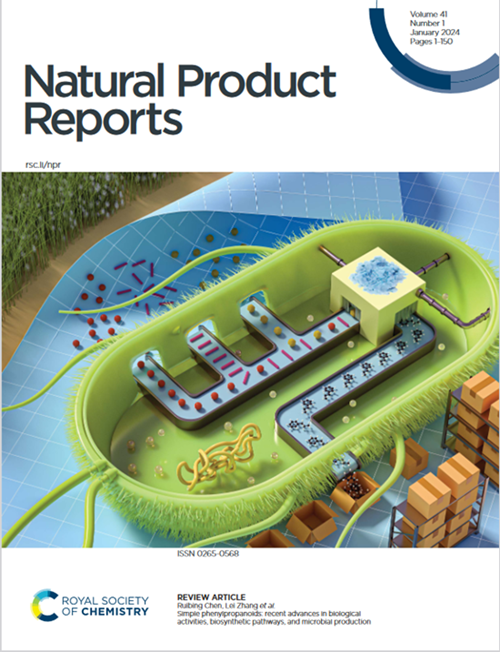Structural diversity, evolutionary origin, and metabolic engineering of plant specialized benzylisoquinoline alkaloids†
IF 10.6
1区 化学
Q1 BIOCHEMISTRY & MOLECULAR BIOLOGY
引用次数: 0
Abstract
Covering: up to June 2024
Benzylisoquinoline alkaloids (BIAs) represent a diverse class of plant specialized metabolites derived from l-tyrosine, exhibiting significant pharmacological properties such as anti-microbial, anti-spasmodic, anti-cancer, cardiovascular protection, and analgesic effects. The industrial production of valuable BIAs relies on extraction from plants; however, challenges concerning their low concentration and efficiency hinder drug development. Hence, alternative approaches, including biosynthesis and chemoenzymatic synthesis, have been explored. Model species like Papaver somniferum and Coptis japonica have played a key role in unraveling the biosynthetic pathways of BIAs; however, many aspects, particularly modified steps like oxidation and methylation, remain unclear. Critical enzymes, e.g., CYP450s and methyltransferases, play a substantial role in BIA backbone formation and modification, which is essential for understanding the origin and adaptive evolution of these plant specialized metabolites. This review comprehensively analyzes the structural diversity of reported BIAs and their distribution in plant lineages. In addition, the progress in understanding biosynthesis, evolution, and catalytic mechanisms underlying BIA biosynthesis is summarized. Finally, we discuss the progress and challenges in metabolic engineering, providing valuable insights into BIA drug development and the sustainable utilization of BIA-producing plants.

植物特化苄基异喹啉生物碱的结构多样性、进化起源和代谢工程。
报道:截至 2024 年 6 月苄基异喹啉生物碱(BIAs)是一类从 L-酪氨酸中提取的植物专一代谢物,具有抗微生物、抗痉挛、抗癌、保护心血管和镇痛等显著药理特性。有价值的 BIAs 的工业化生产依赖于从植物中提取,但其低浓度和低效率的挑战阻碍了药物的开发。因此,人们开始探索其他方法,包括生物合成和化学合成。在揭示 BIAs 生物合成途径的过程中,木蝴蝶和日本黄连等模式物种发挥了关键作用;然而,许多方面,尤其是氧化和甲基化等修饰步骤仍不清楚。关键酶,如 CYP450s 和甲基转移酶,在 BIA 骨架的形成和修饰过程中发挥着重要作用,这对于了解这些植物特殊代谢物的起源和适应性进化至关重要。本综述全面分析了已报道的 BIAs 的结构多样性及其在植物品系中的分布。此外,还总结了在了解 BIA 生物合成、进化和催化机制方面取得的进展。最后,我们讨论了代谢工程方面的进展和挑战,为 BIA 药物开发和 BIA 生产植物的可持续利用提供了宝贵的见解。
本文章由计算机程序翻译,如有差异,请以英文原文为准。
求助全文
约1分钟内获得全文
求助全文
来源期刊

Natural Product Reports
化学-生化与分子生物学
CiteScore
21.20
自引率
3.40%
发文量
127
审稿时长
1.7 months
期刊介绍:
Natural Product Reports (NPR) serves as a pivotal critical review journal propelling advancements in all facets of natural products research, encompassing isolation, structural and stereochemical determination, biosynthesis, biological activity, and synthesis.
With a broad scope, NPR extends its influence into the wider bioinorganic, bioorganic, and chemical biology communities. Covering areas such as enzymology, nucleic acids, genetics, chemical ecology, carbohydrates, primary and secondary metabolism, and analytical techniques, the journal provides insightful articles focusing on key developments shaping the field, rather than offering exhaustive overviews of all results.
NPR encourages authors to infuse their perspectives on developments, trends, and future directions, fostering a dynamic exchange of ideas within the natural products research community.
 求助内容:
求助内容: 应助结果提醒方式:
应助结果提醒方式:


